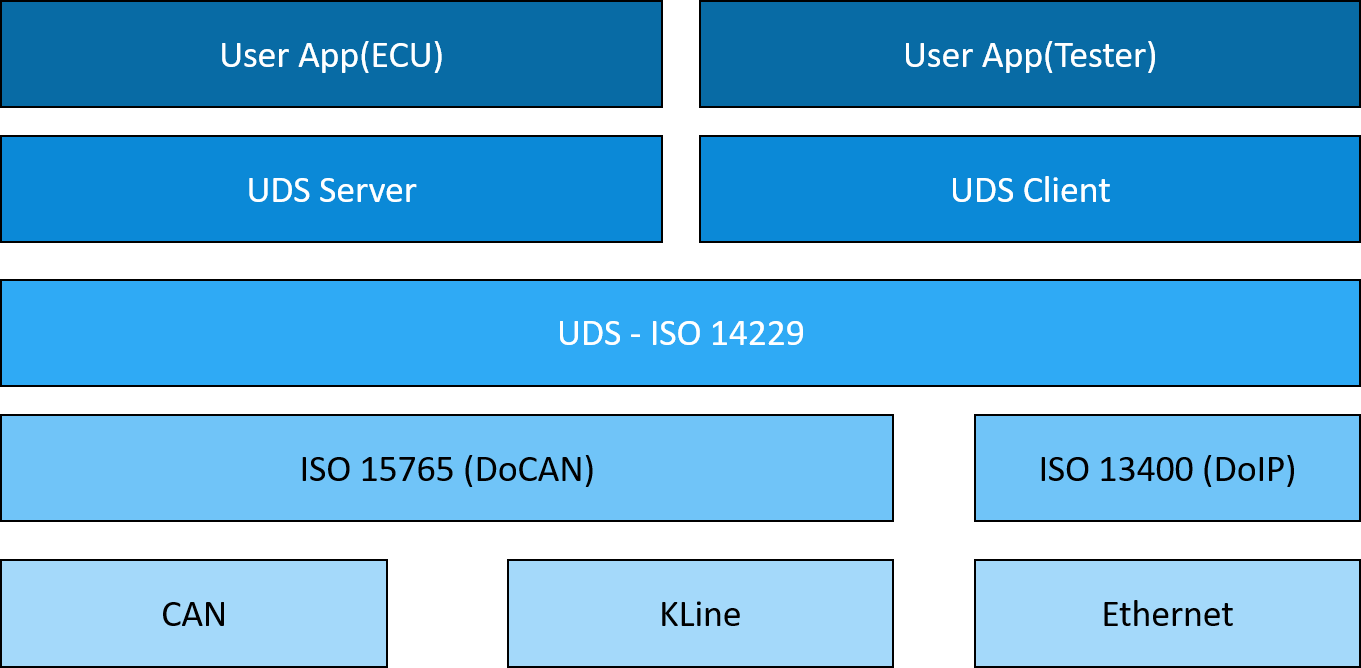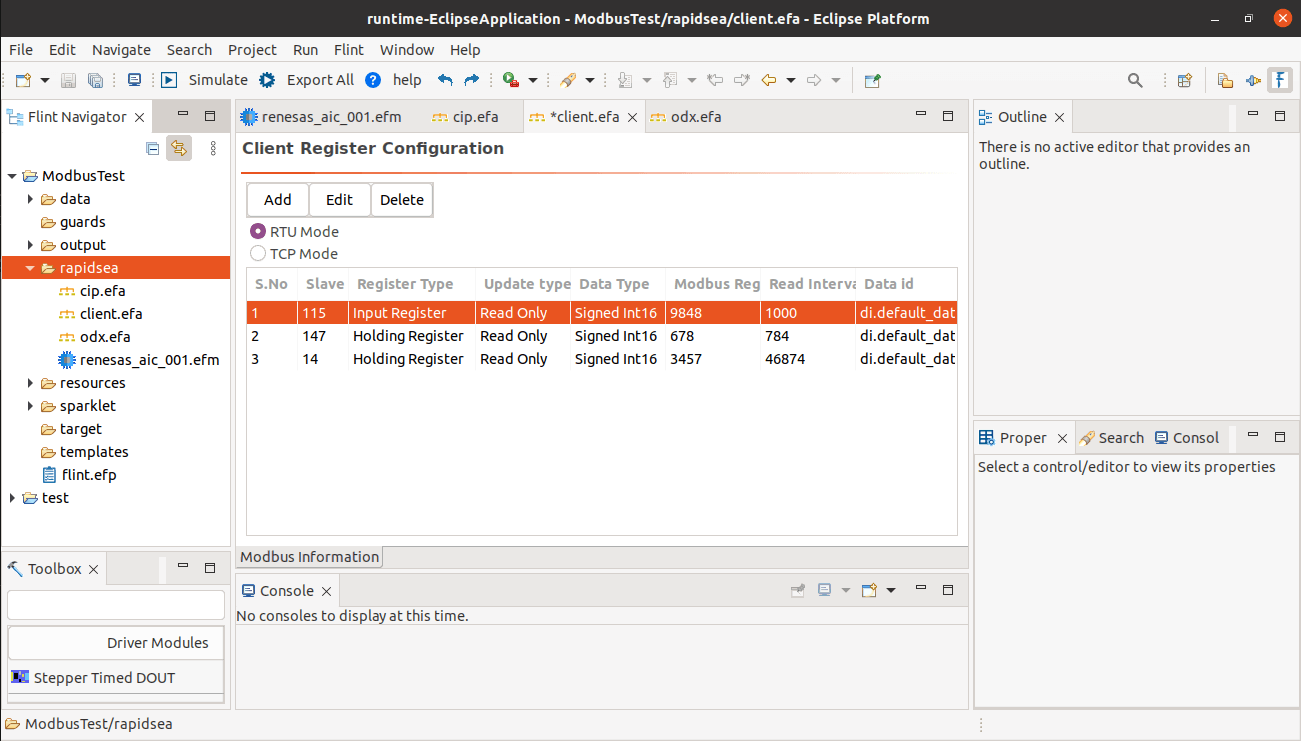RAPIDSEA ISO14229 UDS protocol stack
The best Unified Diagnostic Services protocol implementation available for your automotive ECU development


UDS (Unified Diagnostic Services), defined as a part of the ISO 14229 specification, enables diagnostic communication between ECUs and tester/programmer devices. Embien offers ready-to-integrate UDS protocol stack to expedite enabling vehicle diagnostics functionality.
Embien’s UDS stack is implemented on top of the DoCAN/ISO-TP network layer defined as ISO 15765 specification. Apart of this, it can also support over the DoIP transport protocol defined via ISO13400 specification. With these transport layer support, the RAPIDSEA UDS stack can be used over CAN, CAN-FD, Automotive Ethernet, BroadR-Reach directly and LIN and FlexRay with some modifications.
Some of the popular MCUs on which our stack is ported are being used today for automotive ECU development are Renesas RH850/F1K, RH850/D1M1A, Renesas RL78, NXP S32K, Infineon Traveo S6J3360 etc. Even multi-core devices such as Renesas RH850/U2A leverage our automotive UDS stack for zonal architecture based virtual ECU development.
| Service ID | Name | Description |
|---|---|---|
| 10h | Diagnostic Session Control | Initiate different types of diagnostics sessions |
| 11h | ECU Reset | Perform ECU Reset to revert back to default session |
| 14h | Clear Diagnostic Information | Clear diagnostic trouble codes (DTC) stored in the ECU |
| 19h | Read DTC Information | Read diagnostic trouble codes (DTC) |
| 22h | Read Data By Identifier | Request data from the ECU |
| 23h | Read Memory By Address | Read data from the memory address provided |
| 27h | Security Access | Limit access to data and services to prevent unauthorized access |
| 28h | Communication Control | Manage the exchange of messages in the ECUs |
| 2Eh | Write Data By Identifier | Write data onto the server |
| 2Fh | IO Control By Identifier | Control the input/output signals through the diagnostic interface |
| 31h | Routine Control | Perform start, stop and get status on predefined routines |
| 34h | Request Download | Request server to initiate download data |
| 35h | Request Upload | Request server to initiate upload data |
| 36h | Transfer Data | Perform data transfer to/from server |
| 37h | Request Transfer Exit | Terminate and exit data transfer |
| 3Dh | Write Memory By Address | Write information into the ECU memory location |
| 3Eh | Tester Present | Indicate that the client is still connected and keep diagnostic sessions active. |
| 85h | Control DTC Setting | Enable/disable updating of DTC settings in ECU |
All these services are available for Server and client mode of operations and hence can be utilized to implement both OBD2 UDS diagnostics ECUs and testers.




While the RAPIDSEA UDS stack is being supported for a plethora of MCUs and platforms, Embien can help port the same to unsupported customer platforms and targets. With support for both DoCAN and DoIP transport layers, we can help run the UDS stack over one or both interfaces in an optimized manner as per the target architecture.

While the RAPDISEA UDS stack provides mechanisms to enable different services, it is important to seamlessly integrate the same to the underlying business logic. Whether it is the DTC management or reading/writing DIDs or performing routine control operations, Embien can help integrate your diagnostics feature logic seamlessly with our stack.

One of the major use cases of the UDS functionality is to perform firmware update on the target Engine Control Unit (ECU). Embien with its other offering of RAPDISEA CAN bootloader and its proven expertise on performing firmware updates on numerous ECUs, can help customers quickly integrate this crucial feature for their devices.

With rich experience in diagnostics tools from leading vendors like Vector, Embien can help customers validate their UDS implementation against standards. We can also identify the functional and performance issues and sort them out and assist in bringing out the product quickly to the market in conformance to the specifications.

Apart from supporting the server functionality, our RAPIDSEA UDS stack also supports client or tester feature. Embien has leveraged this on Telematics Control Unit and Telematics Gateway Units to support remote firmware. The TCU/TGC downloads the latest update images over Wi-Fi/LTE etc. and can perform ECU updates one after another.

Having worked to enable cybersecurity features on various embedded devices and applications, Embien can help customers realize fool-proof security for their automotive ECUs. Right from supporting secure bootloader to protecting UDS data using its security mechanisms, we can prepare your ECUs to withstand against the next generation of cyberthreats.





If you are coder, we have a detailed list of APIs with example implementations, that can be readily integrated in your application. If you are not, it is even easier. Leverage our Flint System Configurator to configure and utilize the same.